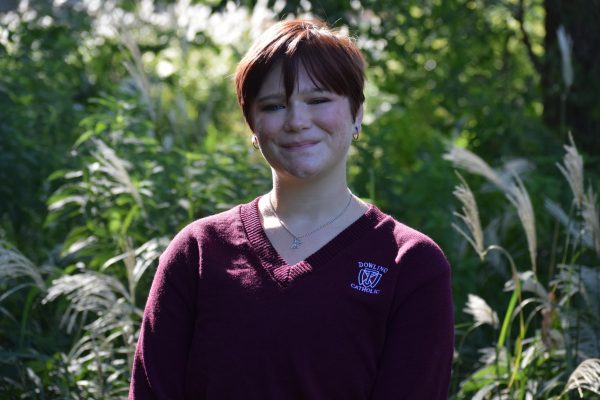Celebrating their 49th anniversary, my grandparents Janice and Paul Scott drove to the edge of their small Iowan town to celebrate their love under the northern lights, a once-in-every-11-year cycle. Paul and Janice Scott meet in elementary school, fell in love in middle school, got married, and had a family in their small town of Coon Rapids, Iowa. My grandpa worked for the Co-op in town and my grandma worked at the bank in Carroll. When my grandma wanted to celebrate under the lights my grandpa told her that he would make it happen. The Aurora borealis, more commonly known as the Northern Lights, are beautiful ribbons dancing across the sky in the North Pole year-round. But why could these magnificent lights be seen in Iowa? Numerous geomagnetic storms and sun maximums.
The sun is on an 11-year cycle (driven by its magnetic field) when the poles of the magnetic field flip. The lights are caused by charged particles from the sun hitting gases in the Earth’s atmosphere. Right now, it is reaching its 11-year “maximum”. According to BBC, during this maximum, the number of sunspots increases, which leads to more coronal mass ejections sending charged particles to Earth, creating the aurora. Sunspots are cooler, darker regions that are concentrations of the sun’s magnetic field on the star’s visible surface (Ad Astra).
The sun’s magnetic field is much stronger in sunspot regions than anywhere else. It’s not known why exactly they form, but the working theory is that the sun’s magnetic field is like a rubber band, and eventually, it can become twisted and snap. When they do, these “snapped” areas rise to the surface as sunspots. The flurry of solar flares and coronal mass ejections can cause the northern lights to appear (Ad Astra).
According to Space.com, different gases produce different colors when energized. The two most common gases in the Earth’s atmosphere are nitrogen and oxygen. Oxygen atoms glow green – the color most often seen in the Northern Lights. Nitrogen atoms emit purple, blue, and pink. These colors are seen less often because nitrogen atoms are harder to energize than oxygen atoms. Only a really big ejection of solar particles produces this kind of display. Sometimes the Northern Lights are scarlet. This is the color seen when solar particles energize oxygen at very high altitudes.
Scientists predict that a geomagnetic storm to continue into the new year. So don’t worry, you won’t have to wait 11 years to see these beautiful lights in Iowa. Just make sure you are out of the city and away from light pollution. According to my grandmother, if you can make it to Alaska to see the Northern Lights, make the trip.



